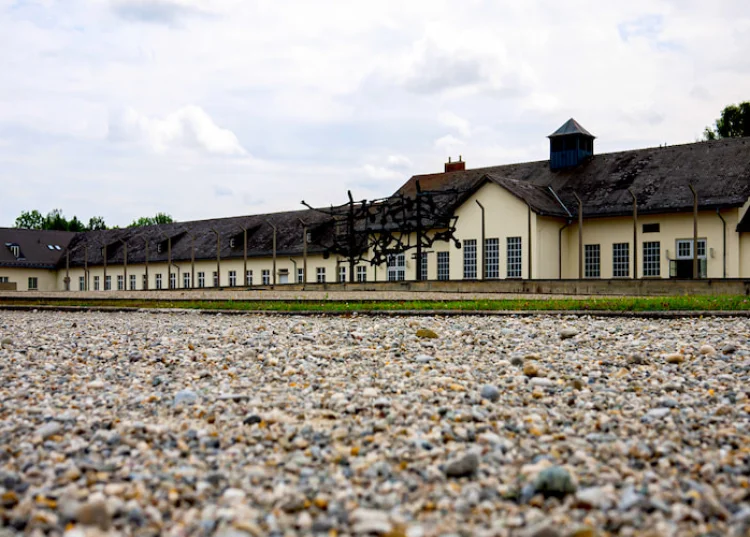The Holocaust, a system of mass murder perpetrated by the Nazis, led to the deaths of 6 million Jewish people – around 78% of all Jews in occupied Europe.
The Nazis embarked upon the so-called ‘Final Solution to the Jewish Question’ under the cover of World War Two. The act was informed by Nazi conceptions of ethnicity, race, ideology and pseudo-scientific eugenics.
Ultimately, the Holocaust was the most extensive and industrialised act of systematic mass murder in history.
Today, that devastating moment in modern history is remembered in sites, museums and memorials across Germany. Here are 6 of the most significant, where visitors can learn more about the history of the Holocaust.

1. Sachsenhausen Concentration Camp
Sachsenhausen Concentration Camp was used by the Nazis between 1936 and 1945. Its primary function was for the imprisonment and execution – or extermination – of Jews and political dissidents, including many Dutch freedom fighters, Russian prisoners of war and even some political leaders from invaded countries.
Estimates put the number of Sachsenhausen casualties at between 30,000 and 35,000, many of whom were shot, hung or exterminated in a specially built room in its infirmary. Much of Sachsenhausen was destroyed during and after its liberation by Soviet and Polish troops on 22 April 1945, but was rebuilt as part of the project to turn it into a memorial and museum.

2. The Holocaust Memorial – Berlin
The Holocaust Memorial in Berlin is an installation commemorating the genocide of the Jewish people perpetrated under Adolf Hitler and the Nazis. The Memorial is a monument to the six million European Jews who died in the Holocaust.
Made up of a vast dark granite maze and a subterranean information centre which has details about the victims, the memorial is a moving site.

3. Haus der Wannsee-Konferenz
The Haus der Wannsee-Konferenz was the site of the infamous Wannsee Conference in which the Nazis planned how to carry out the “Final Solution”, the plan to murder the Jewish population of Eastern Europe.
Today, the site provides a moving memorial to the Holocaust as well as an in-depth history of the rise of the Nazi party, the growth of anti-Semitism and the atrocities committed against the Jews.

4. Jewish Museum – Berlin
The Jewish Museum in Berlin in Germany chronicles the history of German Jews over the course of two millennia. Housed in an incredibly modern building, the Berlin Jewish Museum displays historical objects, documents, photographs, multimedia presentations and even computer games relating to different periods of Jewish history and culture.
The exhibitions are arranged chronologically and cover various themes such as the living conditions of German Jews over the centuries, the role of Jewish women, tradition and change and the meaning of emancipation. The museum also looks at the issue of persecution, in particular during the Nazi era and the Holocaust, offering an insight into both the overall historical context and the lives of individual victims of the atrocities.

5. Dachau Concentration Camp
Dachau Concentration Camp was one of the first of many concentration camps set up by the Nazis to imprison and murder certain groups as part of their campaign of genocide.
Today, Dachau houses a memorial to those who suffered and perished under the Nazis. Visitors can tour the grounds and the remains of the camp and audio guides are available as are guided tours. There are several exhibitions detailing the history of the camp as well as a documentary shown at various times.

6. Burgkloster
The Burgkloster (Castle Monastery) in Lubeck is considered to be one of the most important medieval monasteries in Germany. Established in 1229, the Burgkloster served as a monastery until the Protestant Reformation, after which it was used as a poorhouse until the 19th century. Under the Third Reich, the Burgkloster was used as a Nazi prison, bearing witness to terrible atrocities, particularly against Jews and those who formed the resistance movement.
Today, the Burgkloster is a museum of Lubeck’s history. Visitors can tour the building as well as viewing exhibits on the history of Lubeck’s Jewish community and about Lubeck’s harrowing involvement in the Nazi regime and the persecution of the Jewish people.

